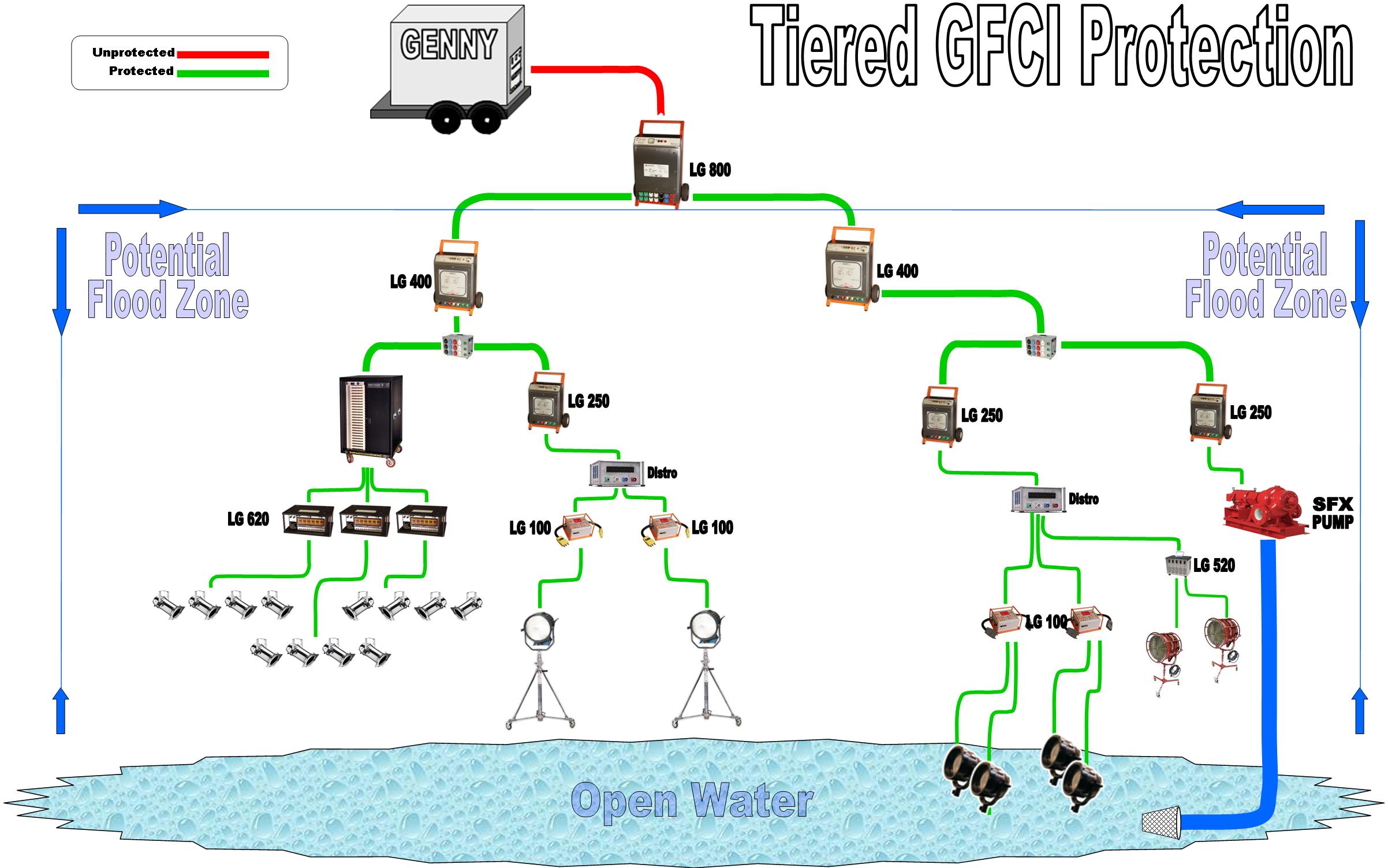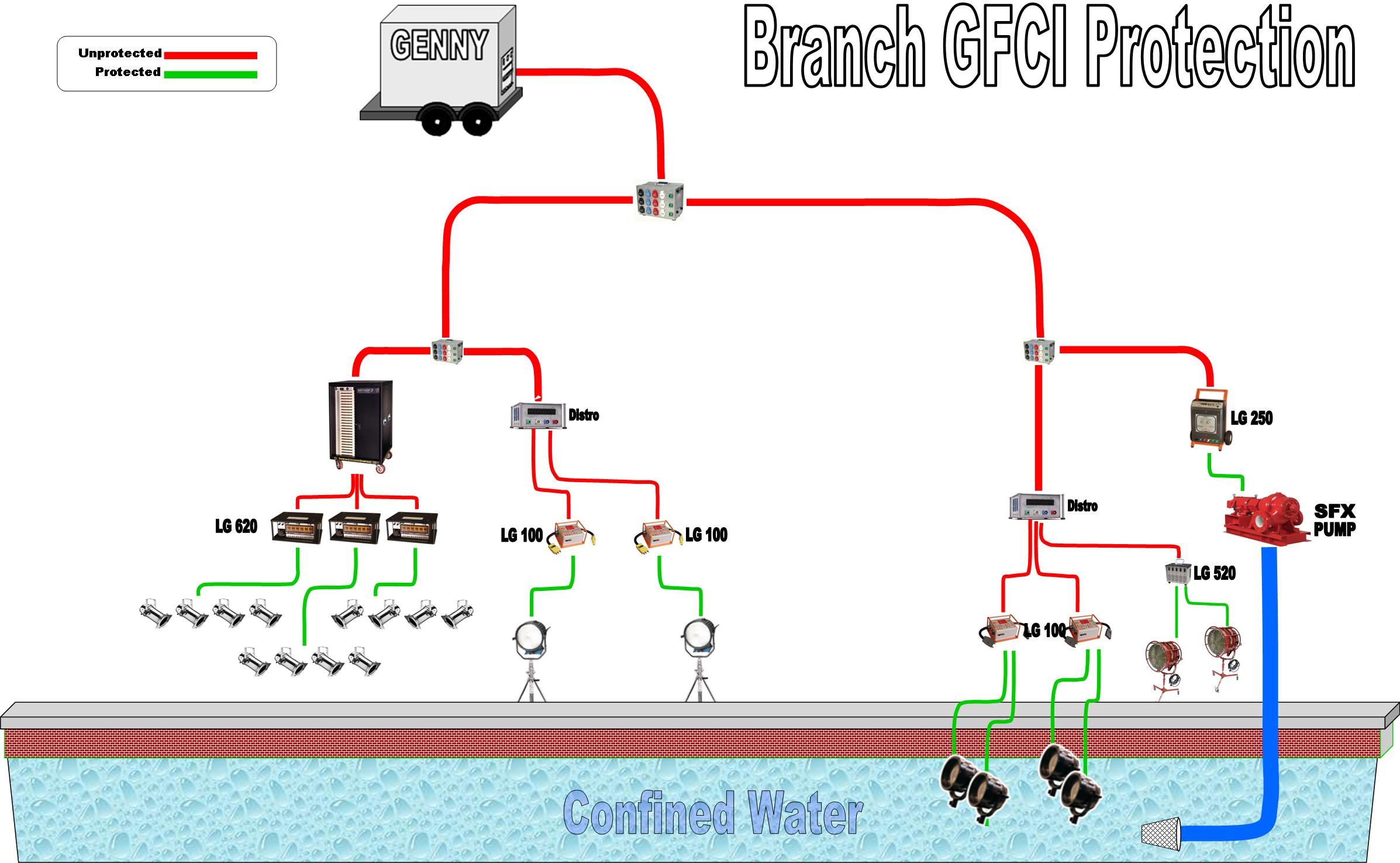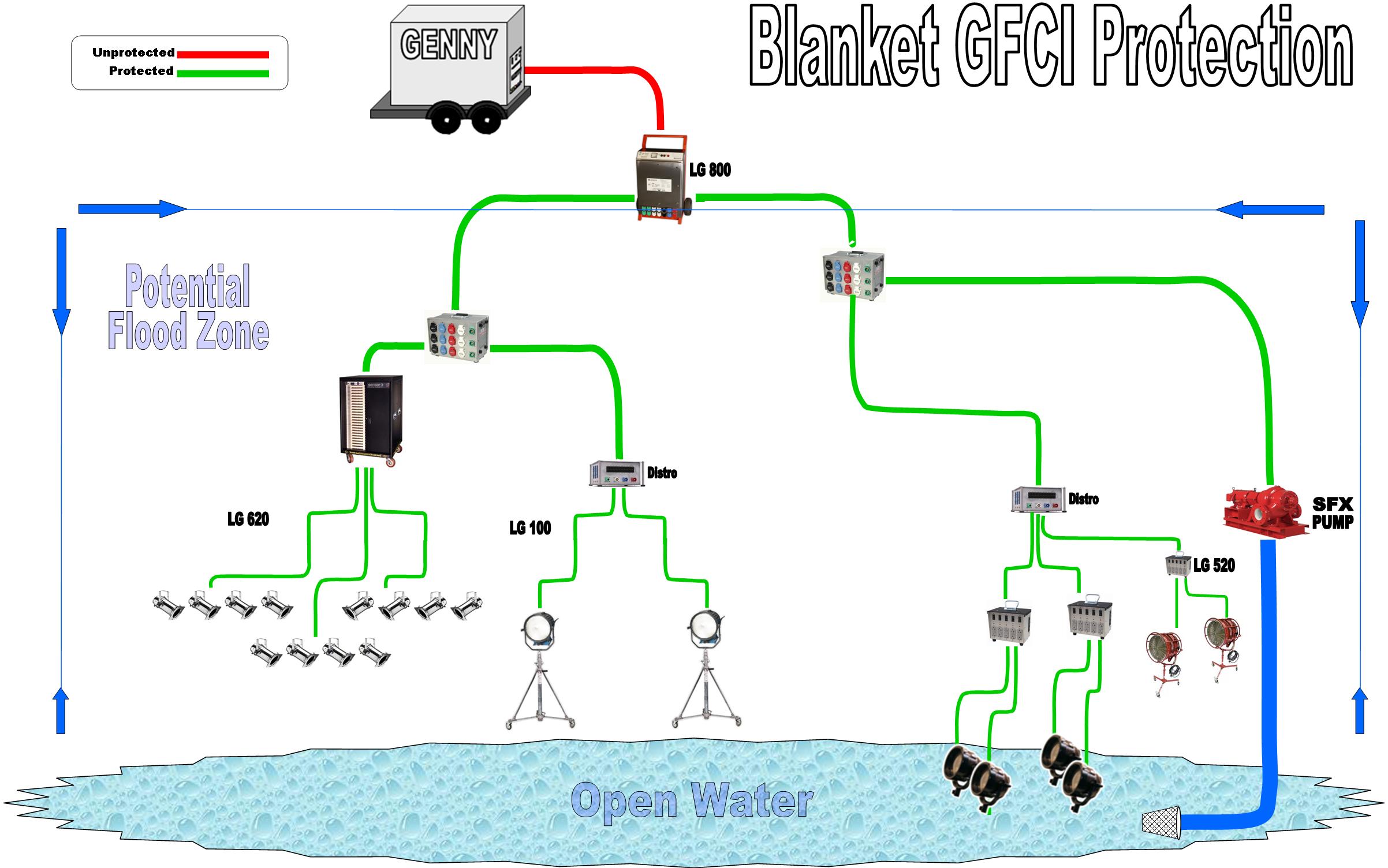Preparing A Set With GFCI’S
How to set up a safe and functioning set with GFCIs.
This is the dilemma that we all face when the there is a need for GFCIs. How do we provide a functioning safe electrical system that guarantees that we have the maximum protection available with the functionality of an ever changing film set with changing power needs? We all know the scenario, we discuss for weeks what the set power needs are and how things will be done, then “on the day” it becomes a complete reversal of ideas and we now need to make adjustments- in our case, we still need to include GFCI protection!
Setting up a properly GFCI protected power system requires some planning and preparing equipment. Knowing how GFCIs work and understanding the affects of cumulative current leakage is a big step toward knowing how to setup a system that works. The biggest problem that occurs on set is when one piece of equipment fails or nuisance trips it causes properly working equipment to shut down simply because it was part of the same circuit. It is neccesary to set up a system that gives us the ability to find a problem quickly, fix it or replace it, and re-energize the protected power? The key to doing this is isolation. A tiered GFCI system for example, allows you to isolate the problem because the closest GFCI will close the circuit and do this without compromising the power on the rest of the system or set.
Listed below are the 3 most common strategies for GFCI protected systems:
- Tiered Protection – Provides protection to all. All cable runs and distribution equipment has some level of protection. This is ideal because branch circuits are isolated and a problem can be found quickly.
- Branch Protection – Provides protection only to circuits closest to the dangerous areas but lacks protection to other parts of the system. This works well when the crew can safely assume that they are dealing with defined area.
- Blanket Protection – Provides protection by placing entire system on one GFCI. This is a compromised option because of cumulative current leakage Once CCL reaches a certain level the GFCI will become too sensitive allowing a small device with a safe level of leakage to carry the unit past the threshold and tripping. This causes a potentially more dangerous situation by removing all power from set.
Tiered Protection – Ideal

To ensure that the entire set is protected including cable runs and all branch circuit distribution, the Tiered protection scheme shown here is used. With this setup only the cable run between the power source and the first GFCI (LG800 with adjustable trip setting) is unprotected. We use multiple GFCIs that allow us to quickly isolate a problem. For example, if a light started leaking current above the 6 mA threshold then the 1st GFCI on the line side would interrupt that circuit only. Isolation isn’t the only reason Tiered Protection is useful. Imagine the scenario that a film crew working at night or in a stage where the only light available to your cast and crew to see was from set lighting powered by a system protected with GFCIs. Then, imagine there is problem that the GFCI detects and this shuts the circuit down. The entire area can go dark. If there was an injury from electrical shock, the darkness could potentially become a greater hazard than the electrical shock.
Branch Protection – Functional

The above example shows branch protection. This is an acceptable way to provide protection if some of the variables of a dangerous wet scenario can be completely removed. In the case of dealing with confined water, the user may be able to reasonably assume that the water will not flood beyond the contained area. Filming around a pool is this possible scenario. Often we are asked to provide power around a pool where it is merely an aesthetic visual choice, no people in the pool, no lighting or power required in the pool. Here we may be able to incorporate this branch method of protection. Because we can safely assume that the water is confined to the pool, providing GFCI protection to just the branch circuits around the pool is very effective.
Blanket Protection – Not Ideal/ Compromised

Blanket protection shown above is the least desired method of GFCI protection. The problem with blanket protection and using only one large GFCI is the build up of current leakage. As everything is connected and energized the current leakage adds up and while many different devices (all with small amounts of leakage) are added, the larger the system gets and the more difficult it becomes not to surpass the trip level set on this one unit. When this happens, the dangers of darkening the set as describe in the Tiered protection is a possible added hazard. Unfortunately the Blanket protection method is tried too often and usually ends with the user having to pull the device out of line. Now the set becomes completely unprotected.



